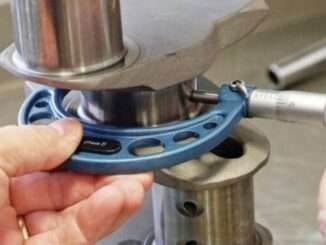
AFTER YOU HAVE DONE A BASIC COMPRESSION TEST, THE NEXT STEP IS, WET COMPRESSION TESTING.
Above all, an engine needs a good seal between the rings, and the cylinder walls. Also, between the valves, and the valve seats. On a healthy gasoline engine, compression usually falls between, 125 and 180 psi, depending on your make and model. So, doing wet compression testing, takes the basic compression test to the next level.
Also, compression testing is the most practical way, to learn about, the mechanical condition of your engine. So, if your engine is blowing blue smoke out of the exhaust pipe, you could have a bad piston ring. This will also cause low compression in that cylinder, and a compression test will confirm that. The same goes for, bent or leaking valves.
So, even if you are just seeing a general lack of power. A compression test can help you rule out, some of the more serious possible causes. Once you have your results, you can make an informed decision, about how to proceed. For example, what specific components to further check, to verify your findings. And, what engine repairs to make, if any are necessary.
So, you have performed a basic compression test and recorded the readings. Next, we will do wet compression testing and record those readings.
HOW TO DO A WET COMPRESSION TEST
The test is basically the same as before. But, this time you are going to squirt about one teaspoon of 30-weight engine oil, into the spark plug hole.
WARNING: Do not use more than a teaspoon of oil, or you’ll get a false high compression reading. Take a compression reading and observe the difference between, the wet and dry test results.
THE RESULTS BELOW INDICATE THE SPECIFIC AREA THAT NEEDS ATTENTION
On A Healthy Engine
- If all your cylinders are reading close to each other. And, there is no big increase in compression (less than 10 percent), it’s a sign of a healthy engine.
Piston Rings Leaking Or Worn Cylinders
- If the compression increases with the wet test (more than 10 percent). Then, the results identify the problem as, the piston rings and/or cylinder walls. Because, the oil added to the cylinder, is now providing a wet seal for the rings. So, the rings are not sealing on their own, but the oil creates a seal and increases the compression.
Exhaust Or Intake Valves Leaking
- If the compression stays the same, the results point to the valve train. The added oil will have no effect on compression, and therefore the valves are most likely leaking. If low compression in only one cylinder, that indicates a bad valve. Exhaust valves burn, because of the hot gases passing through. But, intake valves have the advantage of being cooled, by the incoming fuel. All confirmed by a wet compression test.
Valve Timing Or Camshaft Issues
- So, what if all of the cylinders are low and adding oil into the cylinder, does not increase compression. Then, the most likely cause, is the camshaft timing is off. The timing belt can skip, resulting in staggered and low compression results.
Piston Damaged
- A hole in a piston, will result in no compression in that cylinder. So, remove the oil cap or (PCV) valve from its grommet. Blow-by caused by this hole, can be seen seeping through these openings.
Piston With Excessive Carbon Buildup
- Carbon build up on the top of a piston, will increase compression readings. You can see this through a probe inserted into the cylinder.
Head Gasket Leaking
- A faulty or blown head gasket will leak compression, between two adjacent cylinders. When the other cylinders are within specs, but two adjacent cylinders on the same bank are low. You should suspect a faulty head gasket.
CONCLUSION
So, you don’t need special skills to do a regular, or a wet compression test. But, you need to know, how to interpret your results correctly. Finally, when good compression exists, you can expect a cylinder, to gradually and evenly raise pressure.
TIP: You can also do a, A running (dynamic) compression test.
So, if you do find any issues, the next step would be doing a cylinder leak down test. A cylinder leak down test, is similar to a compression test. Because, it tells you how well your engine’s cylinders are sealing. And, instead of measuring pressure, it measures pressure loss.
BY DANNY BENDER




